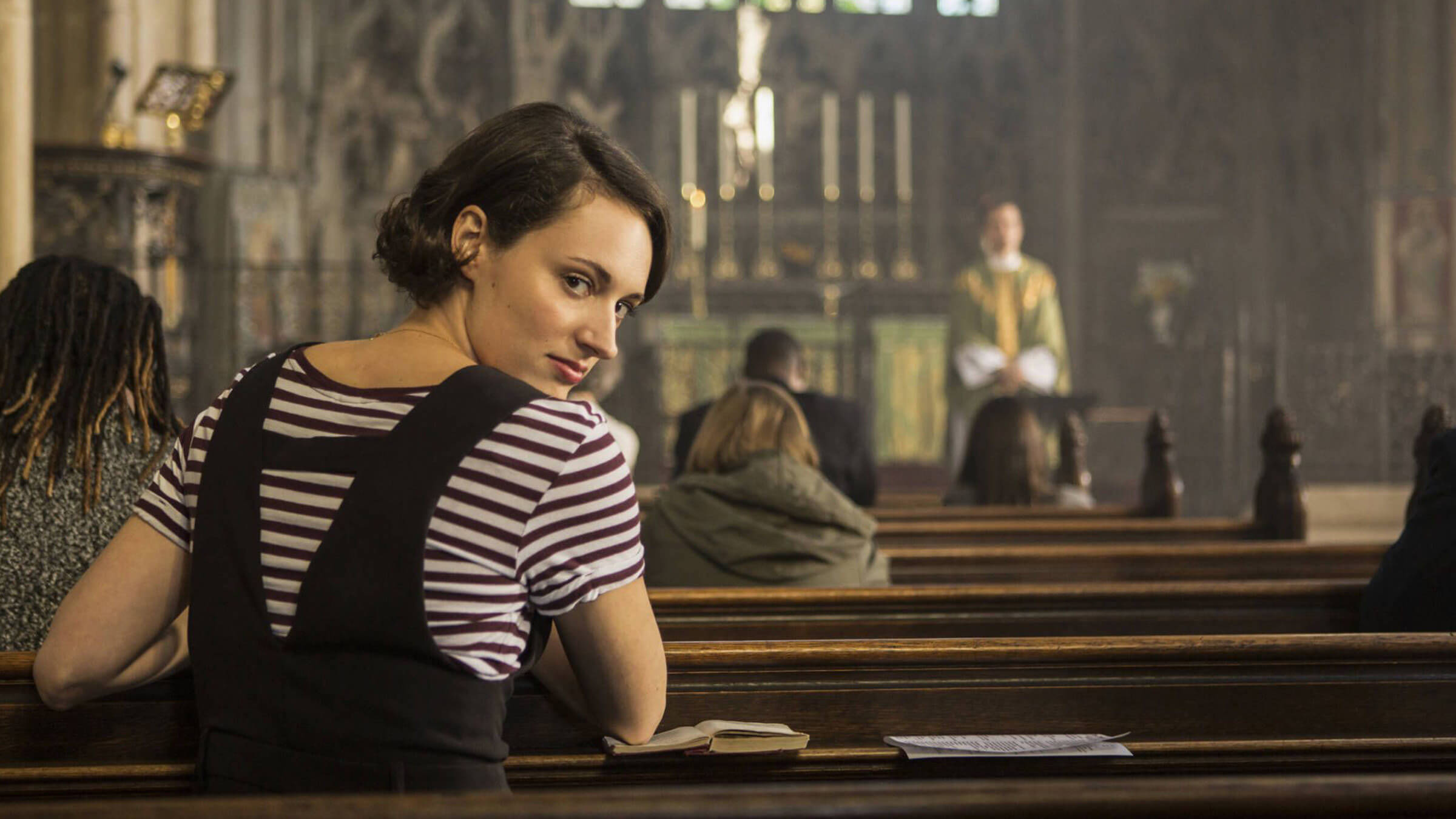By Shanee Edwards · June 14, 2023

Even if you can’t explain exactly what it is or quite understand why it’s being used, you know it when you see it. You’re there watching a movie or TV show and then, all of a sudden, the protagonist (usually) turns their head and looks directly at you. What is that? That, my friend, is a fourth wall break.
It’s an incredibly strange yet powerful tool to have in your literary arsenal, so let’s go over what a fourth wall break is, why it’s used, and which films and TV shows have mastered its use so you can master it too!
The term “fourth wall” comes from a proscenium-style theater where the set exists of three walls (back, left and right walls) with the fourth wall, the one separating the actors from the audience, is accepted by both the audience and the actors as invisible. To “break” it is to shatter that imaginary separation between the audience and the actors.
Other reasons to break the fourth wall could be to remind the audience the story is simply a performance and separate fiction from reality. Another reason is to allow a character to comment on the action in the story and present a point of view that can’t be shared with the other characters. Breaking the fourth wall can also be used to add humor to the scene by shooting the audience a look that is able to say much more than any line of dialogue ever could.
Keep in mind that breaking the fourth wall happens mostly in comedies but can happen in dramas when used in the same way that voice-over narration might be used: to give the audience a deeper sense of what is going through a character’s mind.
Let’s take a look at some examples of breaking the fourth wall in both film and TV.
Phoebe Waller-Bridge, plays Fleabag, a grieving, lonely woman who frequently breaks the fourth wall to comment on the events of the show and to express her innermost thoughts and feelings. Some of the situations in the show seem a bit extreme or exaggerated, so Fleabag’s looks and comments directly to the audience help guide the audience through the story.
Read More: The Script Lab: Fleabag scripts
The premise of The Office is that a documentary crew is filming the daily activities in an American office. When the characters in The Office break the fourth wall, they are seemingly looking directly into the documentary-maker’s camera, but it functions the same way as breaking the fourth wall, especially since the so-called documentary never has any narrative function in the show beyond providing a pretense to interview each character on a regular basis.
Read More: How The Office Was Written
If you’re a fan of John Hughes films or at least comedies from the 1980s, it’s likely you remember Ferris Bueller’s Day Off (1986) fondly. Ferris, played by Matthew Broderick, was charming, clever, super cool and just enough of a bad boy to make you want to skip school with him. But in case these qualities didn’t make Ferris likable enough, director John Hughes employs another tactic: several times during the film, Ferris looks into the camera and speaks directly to the audience, sharing his innermost thoughts. This technique is called “breaking the fourth wall” and can be used for many purposes. When Ferris does it, it makes the audience feel a deeper connection to him, like they are Ferris’s confidant – his best friend.
Read More: Once Upon a Generation: The Prolific John Hughes
Wade, or his alter ego Deadpool (Ryan Reynolds), often breaks the fourth wall but it’s done for more than just comedic effect. For Deadpool, it establishes his sense of superiority, his ego, his need for control of all things, even the narrative of the movie he’s in. It adds a sense of fun and a comradery to character whose likability can be questionable at times.
Read More: 5 Screenwriting Challenges the Writers of Deadpool 2 Overcame
Frank Underwood (Kevin Spacey), is a ruthless politician and one of the most iconic antiheroes in television. For Frank, breaking the fourth wall is crucial to help the audience understand his motivations, especially when they are sinister or despicable.
Read More: House of Cards: Beau Willimon Show-Runner
Jordan Belfort (Leonardo DiCaprio), is a grade-A crook when it comes to separating hard-working people from their cash. When Jordan breaks the fourth wall, it’s as much to educate the audience on financial matters as it is to reassure the audience that he knows full-well that what he’s doing is terrible. It answers the audience’s question of, “Isn’t this guy committing a crime?” Yes, he is, and he tells you that straight to your face making him a shameless jerk.
Read More: 10 Movies That Famously Use the 4th Wall Break
—
Breaking the fourth wall is a clever technique that allows for the characters to speak directly to the audience. This technique can create a sense of intimacy and connection with the audience, as well as add a layer of self-awareness and humor to the story. If you decide to use this technique, it’s probably best to limit it to one character, most likely your protagonist, keep it consistent and don’t overdo it. A little style in a screenplay goes a long way.